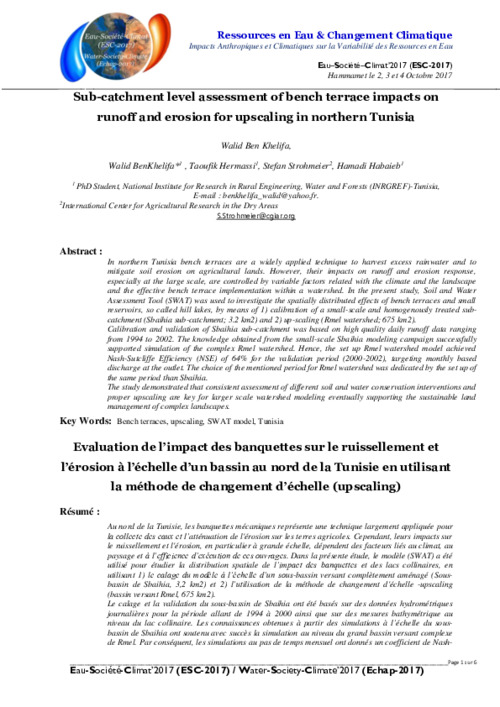Sub-catchment level assessment of bench terrace impacts on runoff and erosion for upscaling in northern Tunisia
Abstract
In northern Tunisia bench terraces are a widely applied technique to harvest excess rainwater and to mitigate soil erosion on agricultural lands. However, their impacts on runoff and erosion response, especially at the large scale, are controlled by variable factors related with the climate and the landscape and the effective bench terrace implementation within a watershed. In the present study, Soil and Water Assessment Tool (SWAT) was used to investigate the spatially distributed effects of bench terraces and small reservoirs, so called hill lakes, by means of 1) calibration of a small-scale and homogenously treated sub-catchment (Sbaihia sub-catchment; 3.2 km2) and 2) up-scaling (Rmel watershed; 675 km2).
Calibration and validation of Sbaihia sub-catchment was based on high quality daily runoff data ranging from 1994 to 2002. The knowledge obtained from the small-scale Sbaihia modeling campaign successfully supported simulation of the complex Rmel watershed. Hence, the set up Rmel watershed model achieved Nash-Sutcliffe Efficiency (NSE) of 64% for the validation period (2000-2002), targeting monthly based discharge at the outlet. The choice of the mentioned period for Rmel watershed was dedicated by the set up of the same period than Sbaihia.
The study demonstrated that consistent assessment of different soil and water conservation interventions and proper upscaling are key for larger scale watershed modeling eventually supporting the sustainable land management of complex landscapes

